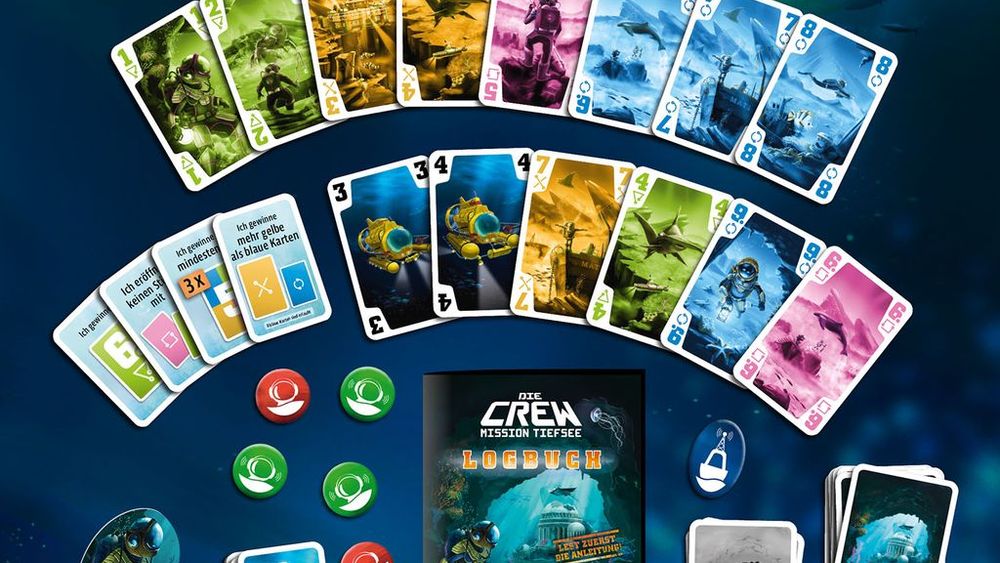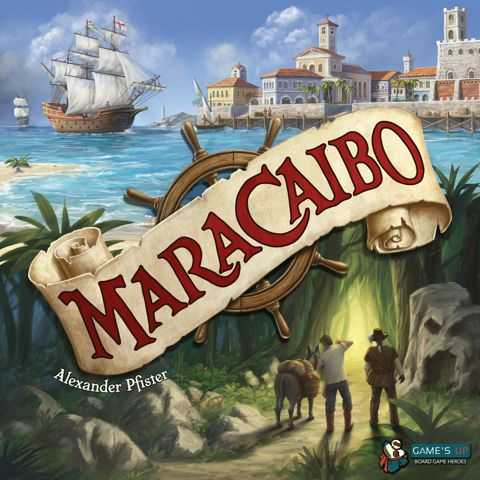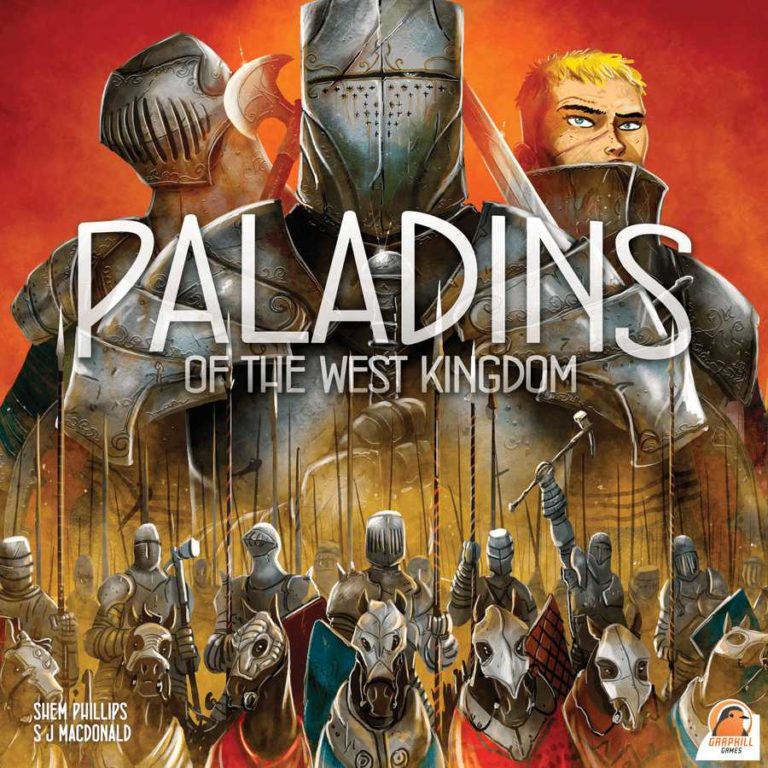The Crew: Mission Deep Sea Review – Uncover The Depths
The Crew: Mission Deep Sea Review – Uncover The Depths
Board games create this unique blend of social interaction, strategic thinking, and pure fun that’s hard to find elsewhere. And sometimes, there’s a game that manages to surprise even a board game enthusiast like me who thought they’ve seen it all. That’s the case with The Crew: Mission Deep Sea. Diving into this game felt like exploring new territory within the familiar landscape of card games.
Key Points:
- The Crew: Mission Deep Sea is a cooperative trick-taking game set in the depths of the ocean.
- The game features 32 unique missions, each adding layers of strategy and cooperation.
- Limited communication and hidden information mechanics add to the strategic complexity.
- The game’s thematic integration, quality components, and remarkable replayability make it stand out.
- The game is best suited for 4 players but can be played with 2, 3, or 5 players with varying dynamics.
- While it offers a thrilling cooperative experience, it may be overwhelming for casual players and requires careful attention to avoid mission failure.
- The game’s exceptional replayability, thought-provoking mechanics, and ability to cater to a wide range of players make it a valuable addition to any gaming library.
In this The Crew: Mission Deep Sea review, I’ll share why this game has captivated both my gaming group and me. We’ve traveled to space with its predecessor, and now we’ve plunged into the ocean’s depths, embarking on underwater missions that test our strategy and cooperation. From stunning card visuals to the structured silence of restricted communication, I’ve savored the experience down to every nuanced rule.
As I recount memorable moments of triumph and of missteps that could have been avoided if only we could communicate openly, I’ll also provide insights on how this game can fit into different gaming circles. Whether you’re a seasoned card game aficionado or someone looking to dip their toes into trick-taking games, there’s something here for everyone. Let’s dive deep and discover what makes The Crew: Mission Deep Sea stand out.
Diving into The Crew: Mission Deep Sea
Overview of the Game’s Concept
The Crew: Mission Deep Sea is like a familiar song with a fresh new beat – it’s comfortable and new all at once. At its heart, it’s a cooperative trick-taking game where each player is part of a team of divers venturing into the abyss to complete various underwater missions. The essence of cooperative play shines through as you navigate through 32 unique missions, each progressively adding layers to the gameplay.
The game comes with a deck of cards and mission cards that guide your underwater quests. If you’re a fan of trick-taking games but crave a twist that calls for more strategy and mutual reliance, then The Crew: Mission Deep Sea definitely warrants a place in your collection. In an ocean of games, this one stands out with its unique blend of individual play within a co-op format – each dive brings narrative-driven objectives that seem to unite and test the group’s collective wit and resolve.
The Crew: Mission Deep Sea offers a unique blend of individual play within a cooperative format, combining familiar gameplay with new strategic twists.
What Sets It Apart from Its Predecessor
The original The Crew game took us on a journey through the cosmos, but The Crew: Mission Deep Sea delves into uncharted waters with new thematic elements. The mission card variety feels more expansive and engrossing, making the marine setting not just a background, but an integral part of gameplay. You’re not just playing cards; you’re navigating treacherous waters, evading deep-sea creatures, and harnessing the mystery of the ocean’s depths to guide your mission.
What truly sets this edition apart is the refined mission setup. It’s a streamlined process that adds variability to each game you play without overcomplicating the setup itself. The difficulty progression feels natural, offering a gradual increase in challenge that retains the accessibility for newcomers but ensures a deep (pun intended) engagement for veteran players.
Whether debating strategies with seasoned gamers or introducing new players to the realm of trick-taking, The Crew: Mission Deep Sea is both accommodating and challenging. It’s an evolution from the original that’s managed to keep the core mechanics intact while creating a newer, richer gaming experience that is both familiar and fresh.
The Gameplay Mechanics Explored
Understanding the Rules and Objectives
The objectives of The Crew: Mission Deep Sea are deceptively simple: fulfill the mission outlined on the card drawn at the beginning of each hand. However, the devil is in the detail, and the missions range from straightforward tasks to complex puzzles requiring astute planning and execution. Each mission card offers a unique scenario, from collecting a specific card to achieving more tricks than a fellow diver.
It’s the structured approach to missions that offers a clear direction but keeps the gameplay variable and exciting. Sometimes, it’s not the mission itself but the approach you and your team take that spells the difference between success and a mission abandoned to the murky depths. Understanding the rules is critical, yet they are presented in a way that’s intuitive enough for new players to quickly get the gist of what’s required to succeed in this deep-sea expedition.
The Trick-Taking Element and Its Twists
In The Crew: Mission Deep Sea, the trick-taking element is as essential as air is to divers. It’s the backbone of gameplay, but with captivating twists that keep every round thrilling. One of the most notable twists is the limited communication that transforms what might be a simple decision in a standard trick-taking game into a strategically complex one.
Players can reveal information about their hands only sparingly, through tokens, that show a bit but hide the rest. It reminds me of the time when, due to a lucky guess and a well-played token, we clutched a mission we thought was lost. Not only do these moments of intuition add drama, but they highlight the beautiful tension and silent synergy needed to win. Every hand is a new puzzle, and the trick-taking serves not just as a mechanic but as a language between divers seeking to understand the unseen in their quest to fulfill the mission.
There’s always that collective breath-holding moment when the right card is played at the perfect time, and that, my friends, is the magic The Crew: Mission Deep Sea captures. Every twist adds depth, encouraging players to read not only their cards but their teammates as well.
The Cooperative Experience
How Teamwork Plays a Crucial Role
In The Crew: Mission Deep Sea, teamwork isn’t just a concept; it’s your lifeline. The missions demand you work in tandem, respecting each player’s contributions, no matter how small. There’s no room for lone wolves here; only a coordinated pack of divers can navigate these missions successfully.
Remember that time when we thought all was lost, but a weak card, strategically played, became the linchpin for our comeback? Moments like this reveal the strength of quiet understanding and collective strategy. Each player’s role is pivotal – and here lies the beauty of it. It is meaningfully cooperative: everyone’s actions count and the joy in triumph is shared, just as the sting in defeat, if a mission fails due to a misstep.
Teamwork in The Crew: Mission Deep Sea is essential for success, as each player’s contributions and collective strategy are pivotal.
Communication Limits and Challenges
But let’s talk about the elephant in the room – or should I say, the shark in the ocean? The limited communication in The Crew: Mission Deep Sea adds a layer of challenge that transforms each game into a practice of restraint and careful signaling. It’s like those underwater documentaries where divers use hand signals; in this game, we use card signals, and we need to be just as precise.
One wrong signal, one hasty play, and you might find your mission drifting away like a submarine caught in a riptide. The game doesn’t only test your ability to play cards right but also to read your teammates, communicated through a single card laid down on the silent ocean floor of the gaming table.
Remember, in this game, the absence of words speaks volumes. And if you think that makes the game easy, think again. Each mission intertwines with the next, creating a mosaic of silent tales of the deep, where every gesture counts. Mastering these unspoken dialogues is crucial, and when done right, it’s pure gameplay poetry in motion.
Game Design and Components
Visuals and Theme Integration
The artwork and aesthetics of The Crew: Mission Deep Sea truly immerse you in the deep-sea theme. Vivid depictions of marine life and the abyssal ocean on the cards transcend mere visuals; they contribute to the overall experience, creating a tactile narrative that complements the thematic objectives of the game.

Each time I fan out my hand of cards, I’m met with a kaleidoscope of ocean blues, interrupted by the strategic icons and numbers essential for gameplay. It’s as if each card is a window into the ocean’s depths, drawing you deeper into the world of the game with every mission. Theme and gameplay meld seamlessly, making each dive a story waiting to unfold in your hands.
The artwork and aesthetics of The Crew: Mission Deep Sea create a tactile narrative that complements the thematic objectives of the game, drawing players deeper into the world of the game with every mission.
Quality of Cards and Game Materials
Beyond the eye-catching visuals, the quality of the game materials for The Crew: Mission Deep Sea is worth noting. The cards are durable and handle well, standing up to the rigorous shuffling and dealing of repeat gameplay. It’s reassuring to know that the game is built to last, considering how often it hits the table in my house.
The tactile experience is as important as the visual one, and the game does not disappoint. The tokens are sturdy, the mission log book is easy to navigate, and the overall design language of the game materials speaks of a well-thought-out product. It’s obvious that care was put into not just the game mechanics, but also into the components that make each session a delight to engage with.
The Crew: Mission Deep Sea’s Replayability
One of the shining stars in The Crew: Mission Deep Sea is its remarkable replayability. It’s no surprise that amongst the plethora of games I’ve encountered, the enduring appeal of this one stands out. Now, let me paint a picture for you – you’ve surfaced from the deep oceans of trick-taking adventures with a satisfied grin, but an itch lingers. “Let’s dive again,” someone says, and you all nod in agreement. You see, that’s the power of The Crew: Mission Deep Sea; it hooks you with its depths and refuses to let go, which is something deeply appreciated in any gaming library.
The 32 Levels of Difficulty Explained
The fascinating aspect about The Crew: Mission Deep Sea is how each mission alters the waters you navigate through its 32 levels of difficulty. Starting with the calm surface waters of level 1, where the objectives are a gentle introduction to what lies ahead, each subsequent mission slowly turns up the pressure, much like the increasing water pressure as you delve deeper into the ocean’s abyss. Analogous to a submersible withstanding the crushing depths, players must strengthen their cooperative skills and strategic thinking to meet the objectives that become more perplexing and challenging as they go.
Much like an underwater expedition growing more treacherous, the game compels players to adapt to new scenarios where the mission cards – your compass in these dark waters – add layers of difficulty with their variety. Remember the feeling when you first spotted a rare fish through the murky depths? Each mission here captures that blend of anxiety and excitement as you uncover more of the deep sea’s mysteries, wondering what you’ll encounter next.
Each mission in The Crew: Mission Deep Sea increases in difficulty, requiring players to strengthen their cooperative skills and strategic thinking as they navigate through the changing waters and face more challenging objectives.
The Game’s Scaling with Different Player Counts
Adjusting the sails to accommodate the crew size can often make or break a voyage, and The Crew: Mission Deep Sea manages player scaling adroitly. The game is fins down fantastic with four players, creating a dynamic that feels as natural as the ebb and flow of the tides. But what about playing with a different number of shipmates?
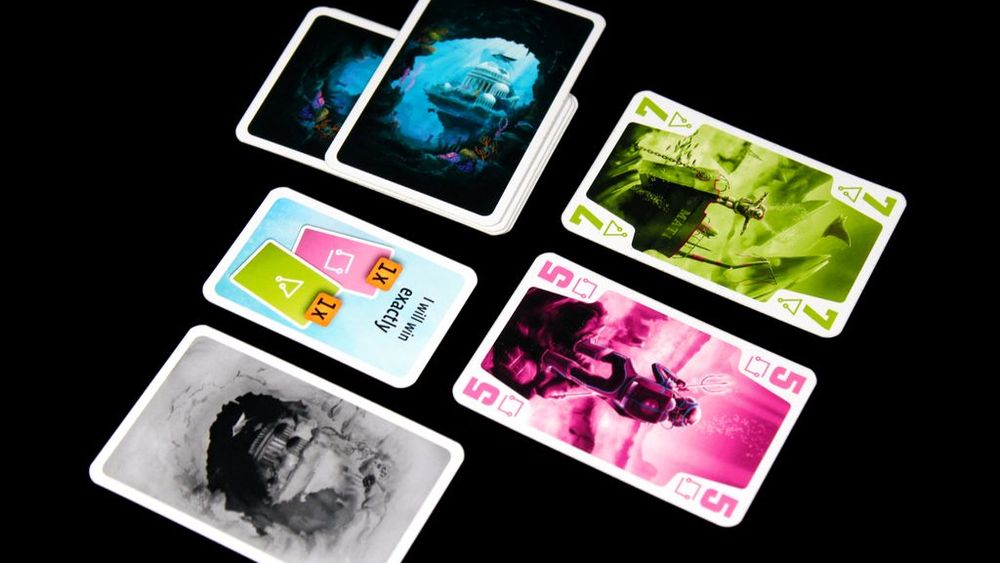
- Two Players: It’s possible, though akin to sharing a submarine with just one other – the intimacy could either be an added delight or a bit claustrophobic. The game compensates with the Captain’s role being more pronounced, yet it may leave you yearning for a larger gathering.
- Three Players: The dynamic shifts, feeling like a triangular dance among the waves. It’s a fine balance, similar to coordinating a trio of divers exploring a sunken vessel. You must be in perfect harmony to gracefully succeed.
- Five Players: This count turns the game into a bustling submarine with camaraderie akin to seasoned divers sharing stories of the deep. Each role becomes even more critical, and the collective strategizing intensifies, heightening the excitement.
Pros and Cons from a Gamer’s Perspective
From a gamer’s vantage point, The Crew: Mission Deep Sea is like a well-charted map with both promising routes and areas marked with caution. Each playthrough acts as a voyage – with potential treasure troves of thrilling gameplay, balanced with the perilous waters of complex strategy that might not suit every sailor.
The Highs of The Crew: Mission Deep Sea
The lure of the deep sea calls to those who relish a cognitive challenge. The Crew: Mission Deep Sea serves an enthralling cooperative experience, with every player’s action being integral to the success of the whole team. The brilliance of hidden information mechanics ensures that everyone stays engaged, contributing thoughtfully to crack each mission’s puzzle.
Moreover, the variety inherent in the mission cards fuels the game’s replayability – each game is a new foray into uncharted territories. It’s this unpredictable terrain that keeps players, like myself, consistently returning to the table, eager to plunge into the depths once more.
The cooperative experience in The Crew: Mission Deep Sea relies on hidden information mechanics and mission variety to keep players engaged and eager for more.
The Lows and Potential Improvements
Despite my adoration for The Crew: Mission Deep Sea, I’ll drop anchor here for a moment to go over rougher seas. Firstly, if your gaming group consists of casual players or those with a preference for lighter fare, this title might be akin to throwing them into the deep end too hastily. The game can be brain-burny, which, while delicious for strategy aficionados, might be overwhelming for novices.
Secondly, a lapse in attention or a misstep can capsize the entire mission – a tense reality that might deter those who prefer a more relaxed card game experience. It would buoy the game to offer some form of salvaging mechanic to forgive occasional small mistakes without sinking the whole endeavor.
Additionally, the game’s translation and rule clarity have room for improvement, with clearer guidance desirable to help navigate the sometimes nebulous waters of the rulebook. Streamlining the explanation of game end conditions and in-game actions would ensure the focus remains on thrilling deep-sea adventures rather than on deciphering text.
The Crew: Mission Deep Sea Review
When reflecting on my experiences and considering the myriad opinions within the community, this The Crew: Mission Deep Sea review must acknowledge it as a distinguished title. This game has been a gateway for some and a complex puzzle for others, a testament to its ability to cater to a diverse range of players. Undoubtedly, the game sits snugly amidst the best in cooperative and trick-taking genres.
How does The Crew: Mission Deep Sea differ from other trick-taking games?
The Crew: Mission Deep Sea stands apart from other trick-taking games with its cooperative nature, mission-based objectives, and the strategic use of limited communication to complete tasks. Unlike traditional competitive trick-taking games, players in The Crew work together and rely on collectively outmaneuvering a series of progressively challenging scenarios.
Can The Crew: Mission Deep Sea be played with two players?
Yes, The Crew: Mission Deep Sea can be navigated with two players, though the game evolves to accommodate the smaller crew. While the dynamic is altered, it maintains its essence by modifying the Captain’s role to ensure the gameplay remains balanced and engaging.
Is The Crew: Mission Deep Sea suitable for families?
While The Crew: Mission Deep Sea poses a cognitively challenging endeavor, it can serve as an invigorating family game, especially for those who enjoy collaborative problem-solving and strategic thinking. It’s best suited for families that relish intellectual engagement over casual card gaming.
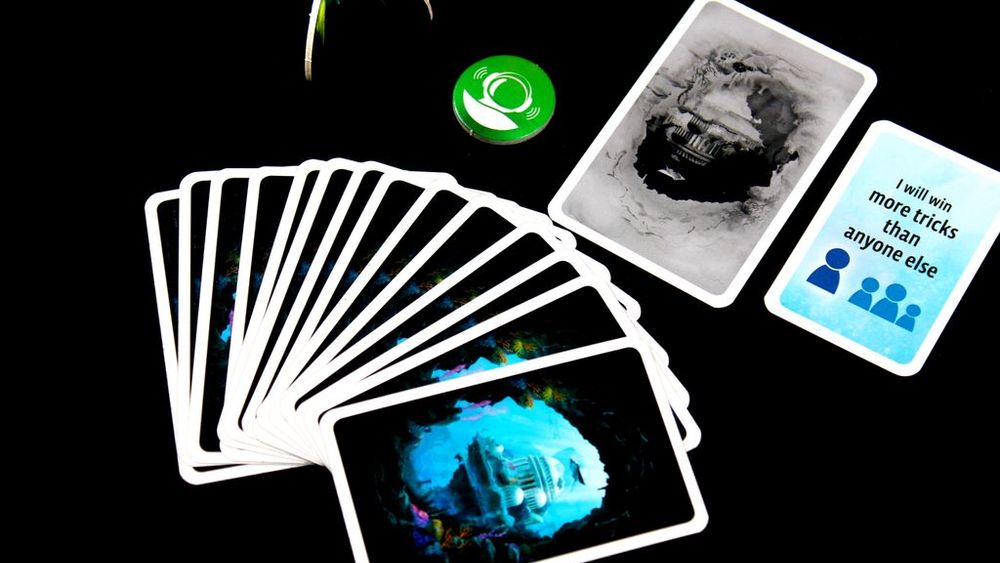
What is the ideal player count for an optimal gaming experience?
The ideal player count for an optimal experience in The Crew: Mission Deep Sea is often considered to be four. This count crafts a balanced and fluid game dynamic that maximizes individual participation while fostering a well-rounded cooperative venture. However, the game tolerates a range, and enjoyment can be found with various group sizes.
Conclusion
In the end, whether you’re a seasoned gamer plumbing the depths of complex strategy or a casual player looking to dip your toes into the world of cooperative gameplay, The Crew: Mission Deep Sea offers valuable treasures. With its exceptional replayability, thought-provoking mechanics, and ability to anchor a wide array of players at the table, this The Crew: Mission Deep Sea review finds it to be a worthy vessel to chart through the vast ocean of board games.
Dive in, embrace the current of camaraderie, and let the sense of joint accomplishment as you complete each mission fill your sails. May it be the starting point of many voyages or the game that keeps calling you back for just one more mission.
And if I may leave you with a ripple of thought, what memorable moment from your gaming adventures has made you feel like you’ve conquered the deep? Share those tales that have anchored themselves in your heart and discuss how The Crew: Mission Deep Sea might create similar cherished memories.
Until our next game night, farewell, and may the depths always reveal new wonders to you.
Lucas
More Boardgame Reviews:
This article uses material from BoardGameGeek and is licensed under the Creative Commons Attribution-Share Alike License.

